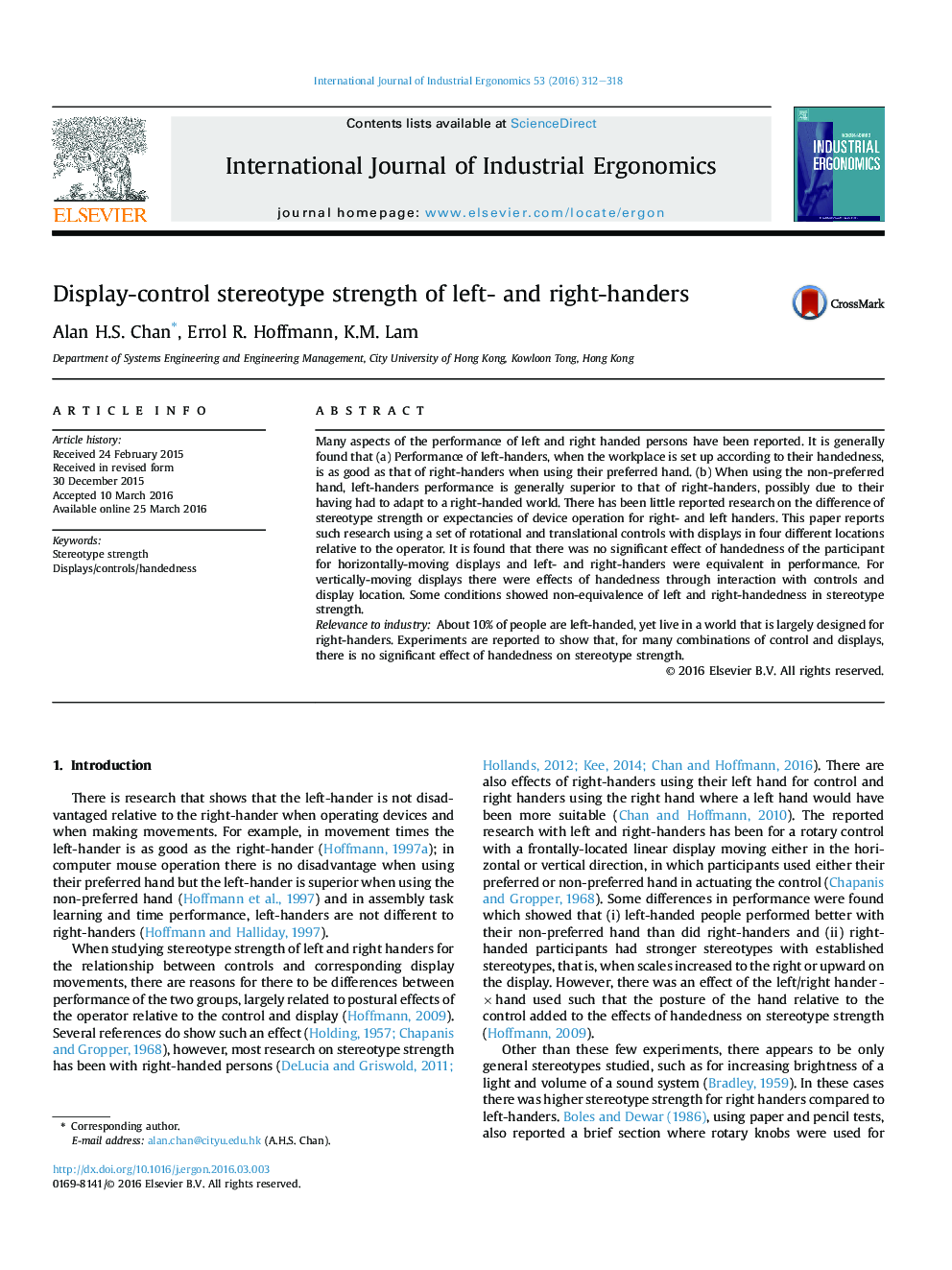| کد مقاله | کد نشریه | سال انتشار | مقاله انگلیسی | نسخه تمام متن |
|---|---|---|---|---|
| 1095834 | 1487422 | 2016 | 7 صفحه PDF | دانلود رایگان |
• Left- and right-handers were studied for differences in display/control stereotypes.
• Left-handers performed similarly to right-handers in control/display expectancy.
• Stereotype strength was equivalent for both hands for horizontally-moving displays but not for all vertically-moving displays.
• The type of control (6 tested) had a significant effect on stereotype strength.
• Vertically and horizontally-moving displays were different in stereotype strength, which was dependent on form of control.
Many aspects of the performance of left and right handed persons have been reported. It is generally found that (a) Performance of left-handers, when the workplace is set up according to their handedness, is as good as that of right-handers when using their preferred hand. (b) When using the non-preferred hand, left-handers performance is generally superior to that of right-handers, possibly due to their having had to adapt to a right-handed world. There has been little reported research on the difference of stereotype strength or expectancies of device operation for right- and left handers. This paper reports such research using a set of rotational and translational controls with displays in four different locations relative to the operator. It is found that there was no significant effect of handedness of the participant for horizontally-moving displays and left- and right-handers were equivalent in performance. For vertically-moving displays there were effects of handedness through interaction with controls and display location. Some conditions showed non-equivalence of left and right-handedness in stereotype strength.Relevance to industryAbout 10% of people are left-handed, yet live in a world that is largely designed for right-handers. Experiments are reported to show that, for many combinations of control and displays, there is no significant effect of handedness on stereotype strength.
Journal: International Journal of Industrial Ergonomics - Volume 53, May 2016, Pages 312–318
